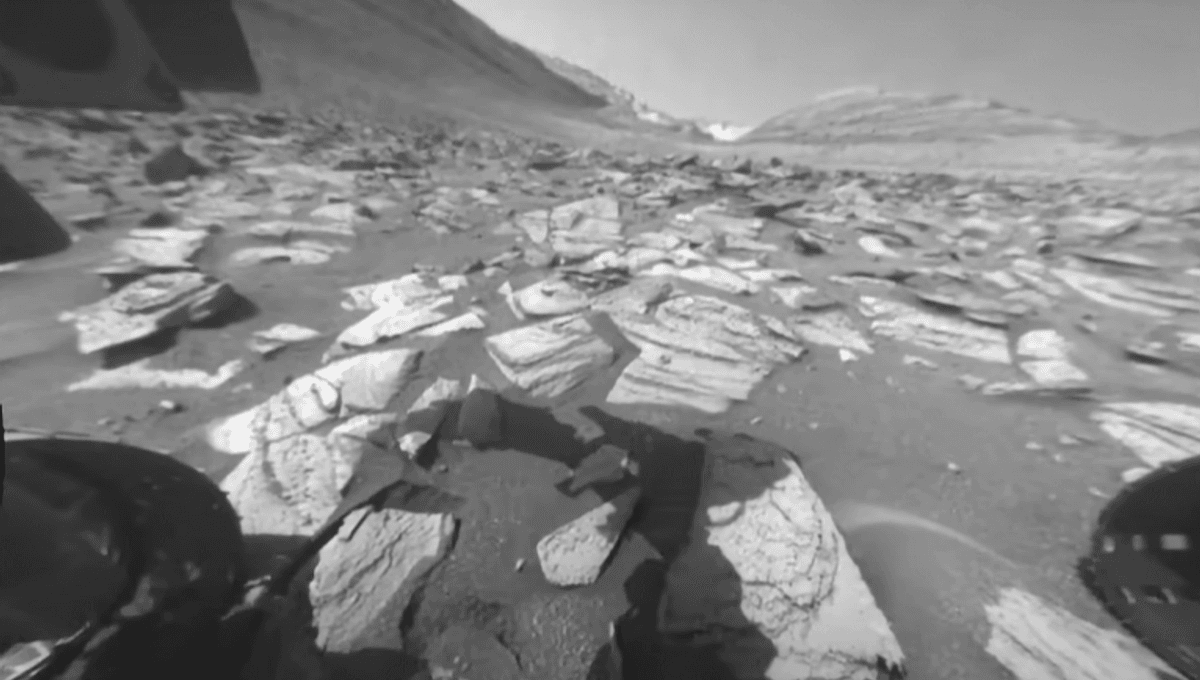
Thanks to some beautiful imagery captured by NASA’s Curiosity rover during the recent Mars solar conjunction, you can now watch the passing of a day, from sunrise to sunset, on the surface of Mars.
The 25-frame video was captured from the Martian surface using Curiosity’s black-and-white Hazard-Avoidance Cameras (Hazcam) on November 8, 2023, from 5:30 am to 5:30 pm local time, as detailed by NASA’s Jet Propulsion Lab (JPL). The videos were the last set of instructions beamed to Curiosity before the two-week Mars solar conjunction, when the Sun is directly between Mar and Earth, meaning communication is paused.
The first video, taken from the rover’s front Hazcam, looks southeast along Gediz Vallis (Mars’s very own “Bermuda triangle”), a valley on Mount Sharp with an elevation of 5.5 kilometers (3.4 miles).
The sun rises, bringing daylight to the Red Planet’s surface. As the day commences, the shadow of Curiosity’s robotic arm and front wheel pan across the landscape, before darkness starts to return. The last frame may look as if stars or snowfall have emerged, but this is actually sensor data noise known as “hot pixels”.
The second video (below) shows the rover’s rear Hazcam looking down the slopes of Mount Sharp to the floor of Gale Crater. You might notice that the 17th frame features a black splodge on the left of the image. Remarkably, this is the result of a cosmic ray hitting the camera sensor.
Martian days, or “sols”, may look pretty similar to days on Earth. However, Mars rotates once every 24 hours, 37 minutes, and 22 seconds, meaning a day is just under 40 minutes longer here than our planet. Martian years are also substantially longer, with an orbit of the Sun taking around 687 Earth days.
NASA’s Curiosity rover landed inside Gale Crater in August 2012. Within this vast 54-kilometer (96-mile) wide basin lies Mount Sharp, which Curiosity has been scaling since 2014. It was initially only set to carry out a two-year mission, but the rover is still operating and continuing to help towards some incredible scientific discoveries.
In October 2023, images from the rover, together with satellite data and 3D scans of layers of rocks from Earth, were used to map out the ancient geology of Mars. This suggested that the Red Planet was once a planet of many rivers, reinforcing the theory that it once harbored extraterrestrial life (and maybe still does).
Source Link: Watch A Martian Day, From Dawn To Dusk, In This Beautiful New Timelapse